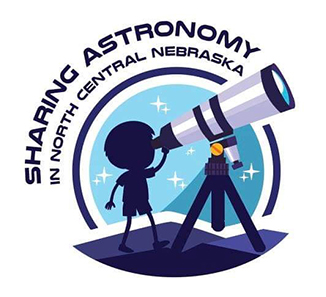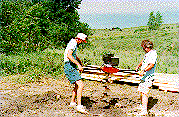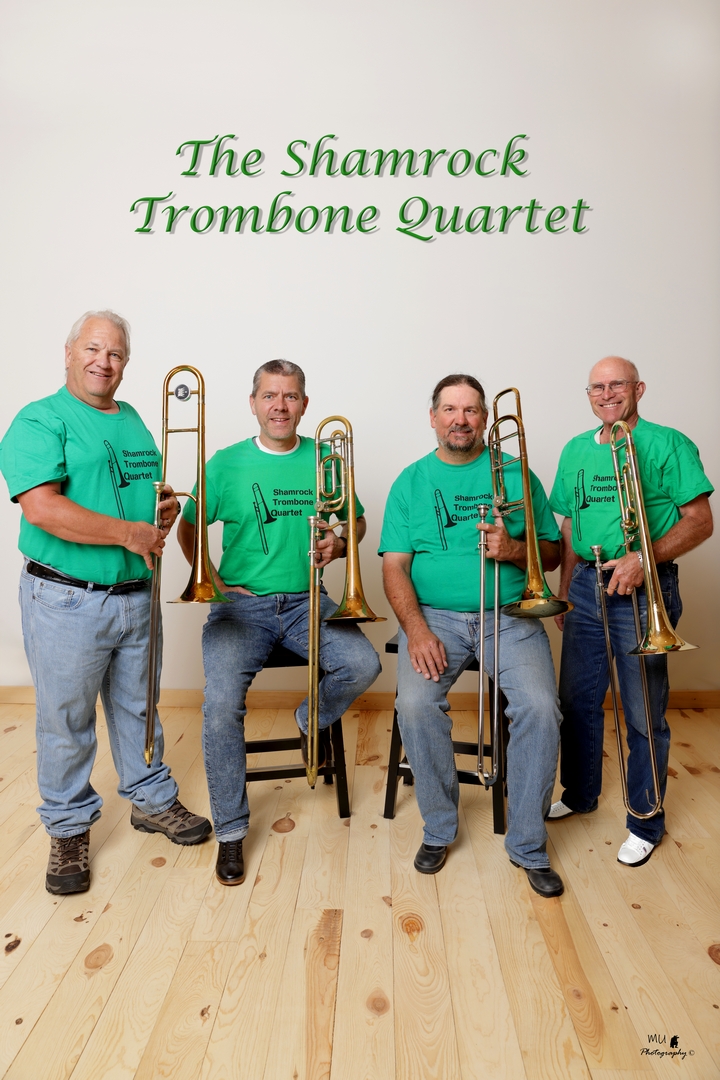






The original Seven Hills
Observatory was built in the Summer of 1996 from July 22 to August 10 in
the Seven Hills Subdivision, approx. 4 miles Northwest of downtown Kearney
Nebraska. The observatory was (and still is) privately owned by Mark Urwiller, but in addition to providing enjoyment to its owner the
primary mission of the facility was to provide a resource for students
and the public to come and enjoy the universe of astronomy.
The observatory was designed by Brad Christensen, formerly of the
Industrial Technology Department of the University of Nebraska Kearney,
now at Illinois State University. Brad also donated his time to
help construct the observatory! It's 20' x 20' with a roll off
roof and was constructed almost entirely of low thermal mass materials.
The only cement used, anchors the 4' x 4" posts in the corners, side
walls, and rail system. The only other cement used was for 4 hard points
(12" cylinders) dug about 40" deep for leveling pedestals attached to
the mount of the big scope. The scope was not permanently mounted to the
floor. The floor, formerly consisted of 1/2" plywood over 1 1/2"
Styrofoam was designed to be isolated from these hard points to not transmit vibration to the
telescope.
The roof is rolled off on 8 - 5" castors using 2" angle iron as channels.
The rails extend such that the roof can be rolled to clear the building
completely by 5 additional feet. The roof has a shallow 3-12 pitch to
reduce obstruction. It is covered by 29 gauge white painted galvanized
steel. (Aluminum was considered, but not recommended to be durable
enough to withstand our summer hailstorms.) When the roof is in place,
it is held by 8 large load binders. These were chosen over turnbuckles
to allow quick release of the roof for observing. The interior has 25'
of cabinet and bookshelf space, two 2' x 6' bench desks with electric
(red) light sources, and 8 wall outlets to allow many scopes with drives
to be used outside the building. Lastly the whole structure was built,
as much as possible with a modular design to allow eventual relocation
of the building in the (hopefully distant) future.
Well that time came. The city of Kearney grew considerably over the years. A light pollution ordinance was adopted which helped, but ultimately the real reason I decided to leave Kearney was to follow my wife Kathy who became the Executive Director of Valley Hope in O'Neill Nebraska. This also opened up possibilities of finding a truly dark site outside of town in that area! A search began to find some land to place a home and the observatory on. After almost a year, while I worked one more year teaching science at Kearney High School, I retired and we ran out of time. We purchased a home in O'Neill. I continued to search for a place for the observatory itself. As luck would have it, one of my wife's work associates has a sister living in Texas who owns property in one of the areas I had looked at. They offered to host the building and wanted to help in sharing it with students and the local community. I am deeply indebted to them for their kind offer!
There is no way the original facility would have existed were it not for the help of many friends who helped in the original construction. This facility was created on a "shoestring" budget! These people include: Brad Christensen, Kay Wolfe, John Kozak, Rod Erickson, Tony Herron, John Keen (deceased), and Nick Kleidosty - a big public Thanks to all of you! Jay Rasmussen of Grand Island (now deceased) was a good friend and also happened to be a retired engineer with his own machine shop! He updated the telescope and fixed or created many items in the observatory over the years.
I wish to thank the following people for their help in taking down the old observatory - Jay Rasmussen (Kenesaw), Bob Runyan (Shelton), Tom and Spencer Shield, Eric Mandernach, and Carter Siebke (Kearney). It would not have been possible without them! Again, I have been very fortunate to have wonderful friends who have a shared desire to share the universe of astronomy with students and the public!
The new site north of O'Neill is off from Road 883 west of Hwy 281. It has all of the criteria I was hoping for - good roads and easy access to the site, electricity nearby, no lights on the site or visible from the site, open skies free of obstruction, and most importantly - wonderful hosts who are also excited about sharing this facility with the schools and public! Thanks to Kathy Boyle and James Parsons of Dallas Texas for their generous offer to allow the new observatory to sit on their property! Here is a map which shows, if you zoom in, light pollution areas near O’Neill. If you follow Hwy 281 north and zoom in to Road 883 (Johnson's 3 Eagles Road) you will find this area is almost at the darkest possible on the light pollution scale. (The darkest sites in Nebraska are about 100 miles west, south of Valentine.) This new observatory site is VERY dark and reasonably near O'Neill. You can see the glow of O'Neill in the south, but most city dwellers have never seen a sky this dark! I am very lucky to have found it! There are no plans to put up signs on Hwy 281 or on Road 883. As in Kearney we want to have visitors register and let us know how many will be coming. There is no cost involved!
The re-contructed observatory has some improvements compared to the former version in Kearney. The floor was redesigned with 2" x 12" x 20' boards as floor joists. This has raised the building over a foot above the ground allowing air flow under the building. This allows the building to adjust to current air temperature faster. This is important for the best images at the telescope. The roof is motorized. Instead of having to pull the roof off with a rope and pulleys; you now just push a button! Most importantly, the observatory has moved from Bortle 4 to 5 skies to Bortle 1 to 2 skies! For those not familiar with the Bortle Scale - click here or here with Sky Quality Meter values.
Viewing sessions for each month can be found on this site as well as the Holt County Independent , and local radio stations.
I am a native Nebraskan - born in Ralston, a suburb of Omaha, in 1958. I was the goofy kid who like to read encyclopedias :) I first remember being interested in the night sky at around 7 yrs old when I asked my father why the stars twinkled. When he could not answer that question I went to the library and found out. My grandparents all lived in Ravenna Nebraska and we visited them often. In the early 60's it was pretty dark there - even in town. I asked for and received my first small telescope at age 10. I still have it!
At age 11 my family moved to Greeley Colorado. As luck would have it, the neighbor across the street was Dick Fennelly, superintendent of Greeley Light and Power. He had a Cave Astrola 8" reflector and a 4" Unitron Refractor. He also introduced me to birding and photography. We only lived in Greeley for a year, but these interests are my hobbies today!
My next home was in Reseda California. My father took me to Griffith Observatory for a meeting of the Los Angeles Astronomical Society. The LAAS still meets there today. Again as luck would have it I met Mike Simmons who was then the president of the LAAS and lived only 4 blocks from me! Today Mike is the former president of Astronomers Without Borders. Mike and other members of the LAAS took me under their wings and nurtured my interest in astronomy and science in general. The is what created my "Pay It Forward" attitude in sharing my interests with the general public. In today's society, the penchant of most is to spend too much time staring down into their digital devices; I offer the chance to look up at the night sky and see where we all came from! Today, I'm the president of the Platte Valley Astronomical Observers (PVAO) and a member of a photo group in Kearney Nebraska which have some notable photographers.
One more thing, you might be wondering about the jazz music on some of these pages. There's a story there too! I started playing the trombone in the 5th grade in Ralston. When we moved to California I was in the band at Northridge Junior High School. The band director was Ed Bigenho - principal Bassoonist for the L.A. Philharmonic. One day a visitor, Leonard Gagliardi, from Reseda High School came looking for me during band. I was in the Taft High School district, but he came to persuade me to come to Reseda High School. He told me he was assembling a group of high school jazz band players who should be the best in the state by their senior year. He wanted me to be a part of it!
Mr. Gagliardi - Mr. "G" was a professional sax player. He started kids out in music in a local elementary school and then farmed them out to junior high schools in the area. Many of the members of the L.A. Philharmonic were teaching music in schools at that time! By the time these students would come to Reseda High School - they could PLAY! The Reseda High School Jazz Band did indeed become the best in California in 1976 - my senior year. Every band who won in California at that time and could go to Montreux France for the world high school competitions had won. We didn't have the money :( We played at the professional Monterey Jazz Festival over nation-wide radio in 1976. I purchased the recording from the festival a few years ago, but am not allowed to post a link to it. However if any member of the 1976 band reads this, I did negotiate the right to share it with band members! For those who want to get an idea of what the band sounded like, here is a link to a recording made with a "boom box" from that era. I have (among others) a recording of the night competition of the High School Monterey Jazz Festival. Bands applied by sending recordings and the top 10 were invited to compete and play during the day. Three finalist bands were selected to compete in an evening performance. We won of course! It's hard to believe that Ted Nash (see below) was only a Junior! Randy Kerber (see below) was a senior. Randy would set his music folder on the piano, but wouldn't open it. He didn't need it! Here's the recording. (It's about 17 minutes long)
There are 2 jazz band class mates who made it really big. They were already big in high school and people came from across the U.S. to hear us. The name Randy Kerber might not roll of your tongue, but you've heard his music many times when you go to the movies! More about Randy. Another name you might not know except he did win 2 Grammys in 2017 is Ted Nash. He is the lead alto for the Lincoln Center Jazz Orchestra at Rockefeller Center in New York. He is in my opinion the best saxophone player in the world and if you ask any other professional sax player, I doubt you'll have anyone disagree.
I taught physics and science classes at Columbus Scotus in Columbus for 3 years and at Kearney High School for 30 years. I have attempted to keep playing my horn over the years. I had my own jazz big band a couple of times and played in a couple of others in Nebraska. I'm very "rusty" at this time, but I have recently formed a trombone quartet which gives me a reason to keep playing. I'm enjoying it!

Keep Looking Around!

Mark Urwiller - Web Page Administrator
 Send comments to:
mark.urwiller@tutanota.com
Send comments to:
mark.urwiller@tutanota.com
Home
Introduction
Visitation Dates Observatory
Equipment
Links
Observatory News Photos Light Pollution PVAO